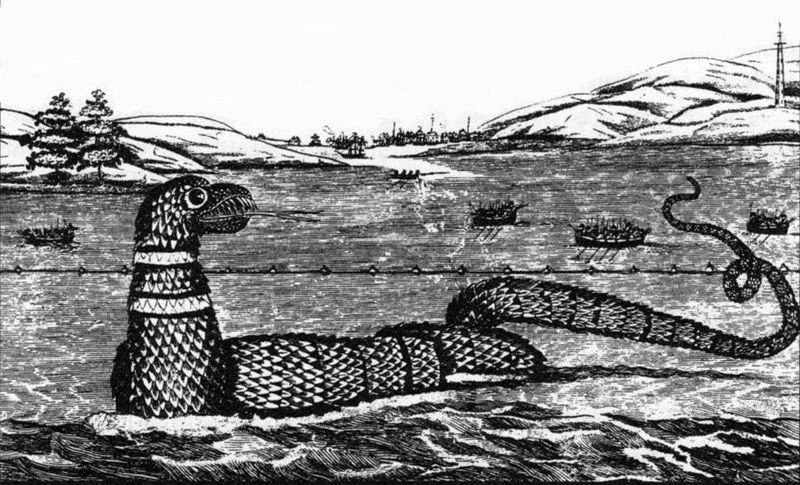The Serpent Came to Gloucester
As a kid, I loved monsters. Sea monsters, especially. I read stacks of books about them, and every time I swam in the deep Canadian lake where we used to go for summer vacation, I’d worry I’d look straight down into the water and see a huge, unblinking eye looking back up.
One day, when I was an adult, I remembered a weird image from one of those books: an old illustration of the Gloucester, Massachusetts harbor with a huge scaly monster swimming around in it. Hmm, I thought to myself. I seem to remember some weird story about hundreds of people seeing a monster in Gloucester Harbor. But that can’t be right. That can’t be real!
So I went to the library and found the very book I’d read as a kid. There was the illustration. And the story was exactly as I remembered it: In the summer of 1817, a sea serpent (or something people think was a sea serpent) swam into Gloucester Harbor and swam around for a week. Hundreds of people saw it. Some people even tried to shoot at it. Here’s the picture I remembered:
When I read this book to kids, they often ask me whether I believe in sea serpents. I will lay my cards on the table and say that yes, I do believe it’s quite possible that they existed … but I’m not entirely sure they do any more. I should mention, I don’t believe in lake monsters (like Nessie or Champie). What I think may have existed is a long, serpentine animal that lived in the North Atlantic. Sailors and fishermen took them for granted for centuries. They didn’t think of sea serpents as special or magical animals in any way – just another creature of the deep. Descriptions of the Gloucester beast – especially strange, little details like the body being segmented into sections – match precisely images and discussions of the sea serpent from centuries before. Here’s a woodcut of a serpent from 1555, for example:
Looking at this picture: On the one hand, there’s very little evidence that the serpents (if there were real serpents) ever attacked a ship like in the picture. (They’re described as being kind of timid and uninterested in humans.) On the other hand, those odd barrel-like lumps are often described in the depositions of the many Gloucester citizens who saw something in those summers of the early nineteenth century.
Those who believe that there was a race of sea serpents surviving into the nineteenth or twentieth centuries suggest that they might have followed shoals of fish south every summer – and they point out that the sea serpents disappeared in the 1920s, right about at the time those shoals were fished out. If there were sea serpents, they might now be extinct.
But they might not. Or they might have never existed in the first place, not since the time of the dinosaurs!
Perhaps you will be the one to unlock the secrets of the sea serpent.
I give up.
I should mention that I wrote this book in the form of a sea shanty, a traditional song that sailors used to sing while out on the ocean. I wanted to give it the same feel that those songs have: full of fun and adventure, but also with a certain wistful sadness, and a recognition of the unimaginable power of the sea.


